#turkic nomads
Text
TURKIC TRADITIONAL CLOTHES VS OTOYOMEGATARİ
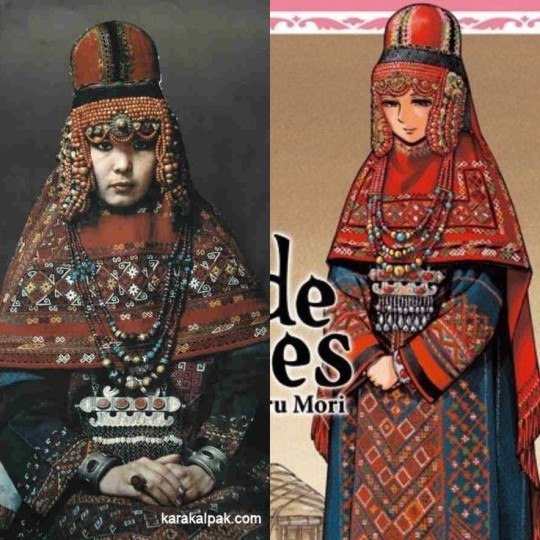
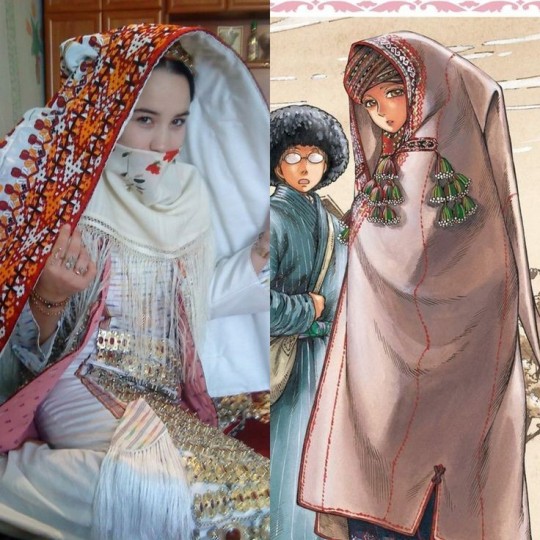
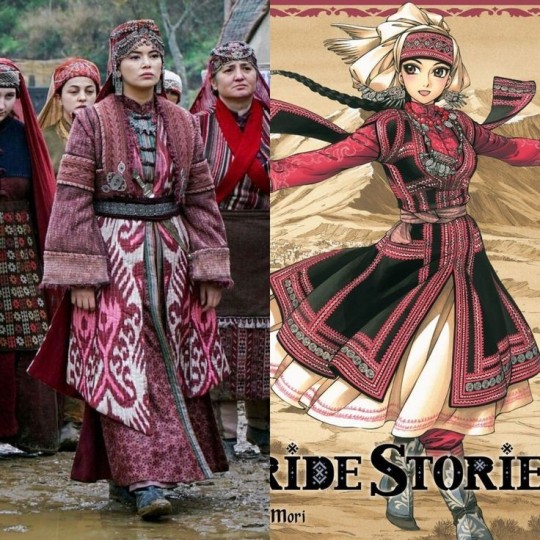

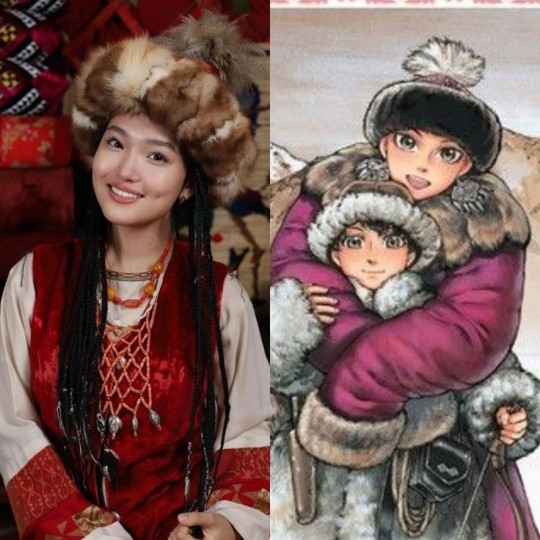
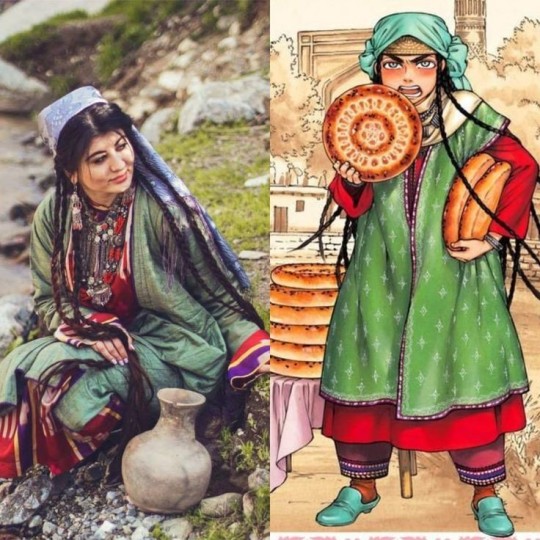
#turkic#turkish#traditional#turkiye#nomad#türk#türkiye#culture#art#artwork#anime and manga#manga#otoyomegatari#uzbek#uzbekistan#turkmen#turkmenistan#karakalpak#kazakh#kazakh culture#kazakhstan#kyrgyzstan#kyrgyz#asian#central asia#west asia
224 notes
·
View notes
Photo

Kyrgyz girls in Afghanistan.
Source: Kate Hallam
#afghanistan#afghan#afghan girl#afghan child#badakhshan#wakhan corridor#wakhan#kyrgyz#turkic#nomad#nomadic#folk#traditional clothes#tradition#rural#red#culture#cultural clothing
132 notes
·
View notes
Text
The Controversy of Uralic Peoples as Mongoloids


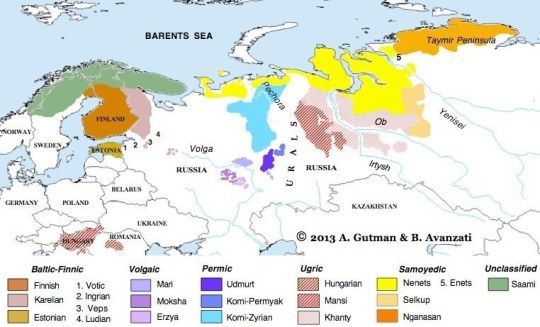

During the age of European nationalism, Finns, Hungarians, and Estonians have often had the concept of their Whiteness challenged. Some individuals have even gone out of their way to classify these three collectives as a part of the Mongoloid (East Asian) race. The strongest evidence for this claim had to do with linguistics. In the 21st century, many individuals only recognize language to be a fluid construct that has no indication of race. However, Europeans of the late 19th and early 20th century perceived language as an ethno-racial marker.
Some Western Chauvinists theorized that their shared identity of whiteness was partly ingrained in their common linguistic heritage. A broad language family identified as "Indo-European" is what loosely bound the white race together. The Finnish and Estonian tongues, however, are derived from the "Finno-Ugric" or "Uralic" language family. Because of this discrepancy, the Uralic peoples were considered Orientalized by their lack of linguistic kinship. In addition to a difference in language, certain Uralic populations also possessed physical features similar to that of East Asians. Most notably, ethnic groups like the Khanty and Mansi have pronounced epicanthic folds and maintain distinct linguistic ties with the Hungarians. These linguistic and phenotypic attributes indicated that, although the Finns, Hungarians, and Estonians appeared to be white Europeans, they were, in actuality, descendants of the Mongoloid race. These racial designations were not merely trivial ideological conflicts either. We see its impacts demonstrated when, in the United States, early Finnish immigrants were not considered white. In their book, Peter Kivisto and Johanna Leinonen note how a Finnish gentleman was denied American citizenship due to his Mongoloid origins.
This condescending view of the Finns was even shared by their fellow kin from Central Europe, the Hungarians. But why? Why would the Hungarians, a fellow Uralic-speaking people, deny any sort of linguistic/lineage tie with the Finns? This rejection is rooted in several factors tied to race, culture, and politics. In terms of politics, Hungarians have often tried to ease themselves into the sphere of pan-Turkism. This was especially prominent during the era of European nationalism when pan-Slavism was perceived as a threat to Hungary. In a reaction to Pan-Slavism, the Hungarians have often hearkened to their steppe ancestry as proof to be included as a part of a Turkic union. In addition to political factors, Hungarian history has instilled a strong sense of pride in their descent from hardened steppe warriors. The Hungarian nationalists envision themselves as the perfect syncretism of equestrian valor and . However, this romantic imagery is removed by asserting that Hungarians are related to the Uralic people. Uralic people, who were not steppe warriors, but lowly fishermen from the baron reaches of northern Europe.
The Nordicists sought to reinforce Hungary's shared origin with the Finns by emphasizing their cranial similarities. In his work Intra-Nordic Differences, Suvi Keskinen writes:
"Anders Retzius, Professor of Anatomy and Physiology,
developed a skull index to investigate “longskulls” and “shortskulls,”
coming to the conclusion that the Finns, the Sámi, and Hungarians
were to be placed among the Turanian type, understood as of Asian
origin"
Finland's history of being colonized by Sweden only added to the narrative that Uralic people were naturally meant to exist as subjugated people. This was in no way appealing to the Hungarians who sought independence from the Austrian Empire. This degrading portrayal of Finns as a subjugated and primitive race caused Hungarians to distance themselves from any sort of shared identity. In the book Languages and Publics, by Susan Gal and Kathryn Woolard, the authors note that a certain linguist was disgusted at the notion of having any sort of ancestral lineage to the Finns. In contemporary times, however, Hungarians have largely come to accept their place as members of the Uralic language family. Though others may stress the possibility of Turkic roots, one cannot deny the distant Siberian influence present across all Uralic peoples.
As the era of nationalism waned, the focus on race and ethnicity also diminished. The tumultuous aftermath of World War 2 prompted European nations to reconsider their relationships with neighboring countries. This shifting landscape gradually relieved the burden on Finns, Hungarians, and Estonians to constantly affirm their place within the Western sphere. The post-war period brought a nuanced perspective, allowing these nations a respite from the need to continually assert their Western identities.
Book Sources:
Kivisto, Peter, and Johanna Leinonen. “Representing Race: Ongoing Uncertainties about Finnish American Racial Identity.” Journal of American Ethnic History 31, no. 1 (2011): 11–33. https://doi.org/10.5406/jamerethnhist.31.1.0011.
Map Sources:
Morton, Samuel George. 1839. Crania americana or, A comparative view of the skulls of various aboriginal nations of North and South America. To which is prefixed an essay on the varieties of the human species. Illustrated byseventy-eight plates and a colored map., Philadelphia : J. Dobson; London : Simpkin.Marshall & co.
Map of human races (Meyers Konversations-Lexikon, 1885–1890)
#finland#finnish#magyar#hungarian#history#anthropology#nordic#uralic#linguistics#america#united states#sámi#europe#western civilization#maps#turkic#nomad#mongolia#asian#mongoloid#national identity#country#estonia#khanty#finno ugric#carpathians#ethnicity#hungary#european#suomi
2 notes
·
View notes
Text
Evillious Chronicles The Horde Nation AU
The darkness was absolute.
But it was not the time for Atay and his soldiers to sleep, although they were feeling drained. They were after their enemies whom ought to be sleeping soundly now. They were planning to spot their place on their horses and kill them. They did this multiple times, so some assumed that it wasn't a big deal for them. Despite that, the enemies they were facing now was not an easy match at all. They know their attacking strategies which the other races did not know about. How could an enemy figured something so difficult out, you may ask. Perhaps its best explanation would be "They are also using the same attacking strategies" .
Hm, it is brazen that those two races are related, both of their hair colors being the same color, turqouiso. They were once the same race and lived together until an unfortunate event drifted them apart. Besides that their races were vastly different than the other races in evillious. The horde nations in evillious were all different. It's because that they were created by Tulin and Lich, whom are now both demons...
Tulin and Lich were scientists on second period. Tulin was specialized in astrophyschis while Lich specialized in genetics (superhuman/human races). They were also engaged and were planning to marry when they'd arrive at the new planet. But Hazuki and Held had planned a different ending for them, turning both of them into demons, as Hazuki and Held thought they'd bring nothing but harm to evillious. This decision was made despite the fact that Lich and Turi were told that they will be gods. Now they were willing to take revenge due to their memories not receding, unlike their collagues. They were the creators of the half of the 3rd period population after all. Even their creations became the majority of evillious by the time passed. Their creations' souls were created by Tulin while their bodies being created by Lich. Lich even used the neanderthal genome, homo sapines genome, and the vampire genome samples; willing to create a great superhuman race. Besides, he added some genes which he had created to this superhuman race. You may wonder the reason why the race they've made became a horde nation. It was because of Tulin's ancestors. They were Turkic people whom were nomadic people. Lich's carried out lots of researches regarding Tulin's ancestors since their first meeting. Soon he became interested in the lives of those nomadic people. With those knowledge he even started to call Tulin "Khatun". That was a compliment which Tulin liked, appreciating him for caring about her ancestors. But even Tulin had no tendency to guess that Lich'd create a superhuman race out of adoring her and her ancestors. Though, one thing was certain. It was surely a proof of Lich's brazen and absolute love towards Tulin....
With their creations' extending in evillious, the hatred towards the gods (whom the horde nations clamied as fake gods) has increased. Gradually they became the scourges of evillious, thinking that the punishment of other nations was a task giving to them by their gods. While doing so they thought their gods were the sky itself. Tulin was the moon and Lich was the sun for them. Though, they had no clue that their gods were actually demons...
Lich and Tulin sought to be together once again, with the creations of them being alongside with them. They had made many contracts with the people in evillious, mostly with their creation. They did eveything they could to reunite. Only time will show when this reunite will happen...
So, this is the story of Lich and Tulin's reuniting with their creation, and their creation finding out about their gods' true nature...
#evillious chronicles#lich arklow#evillious#evilliouschronicles#licharklow#arklow#turi arklow#turin arklow#evillious chronicles au#alternative universes#horde#mongolian#mongolia#turkic#story#ec#alternative universe#nomadic#the evillious chronicles
5 notes
·
View notes
Text
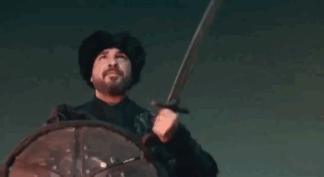



Traditional Turkish dance scene called the sword n shield from the Turkish historical drama.
5 notes
·
View notes
Text
Exploring the Kirghiz People: Culture, Language, and History of Kyrgyz Nomads
Uncovering the fascinating world of the Kyrgyz people
The Kyrgyz people are a fascinating Turkic people from Central Asia with a rich cultural heritage and unique way of life that captivate and inspire people around the world. In this article we cover information about their traditions, history, and experiences, providing valuable insight into this amazing community. Whether you are an avid…

View On WordPress
#Central Asia#Kirghiz culture#Kirghiz history#Kyrgyz diaspora#Kyrgyzstan#Nomadic lifestyle#Professional Interpreters#Remote Interpreting#spiritual beliefs#traditional crafts#Turkic languages#yurt living
0 notes
Text
instagram
#Instagram#raid#theraid#illustratednovel#illustratedfiction#fantasy#mythology kind of#graphicnovel#folktale#epic#saga#korkutata#oghuz#kazakh#turk#turkic#nomad#art#conceptart#illustration#painting#book#artbook#comics#manga#manhwa#literature#novel#fiction#traditionalfantasy
0 notes
Text

This artifact, an ancient Roman brick with Jewish symbols (probably a burial plaque), was found in one of the graves at a necropolis from the 8th-9th century, at Čibska šuma archaeological site near Čelarevo in northern Serbia. At the site, alongside Turkic and Slavic graves, some bricks were also found with engraved inscriptions translated as Jehuda or Yahweh and Israel. According to archaeologists, they belongs to a nomadic tribe of unknown origin, that practiced Judaism. These people came from the east, most likely from the Pontic steppes and Central Asia along with Avars and settled in vast plains of the Pannonian basin in present-day northern Serbia and eastern Hungary.
#jewish#serbia#hungary#archeology#turkic#central asia#hm would like to know more about this#is there some link to the Khazars?
204 notes
·
View notes
Text


Otoyomegatari
#turkic#turkish#traditional#türk#nomad#artwork#art#anime and manga#manga#otoyomegatari#turkmen#turkic culture#kazakh#kyrgyz#azerbaijani#chuvash#gagauz#uzbek#bashkir#girl
36 notes
·
View notes
Photo

The territorial history of Armenia and Azerbaijan
“Atlas of the Ethno-Political History of the Caucasus”, Arthur Tsutsiev, Yale University Press, 2014
The Armenian historical view centers on the global threat associated with the expansion of Turkic-speaking tribal groups into former Armenian territories, including Artsakh (Karabakh). Today's Azerbaijan is itself largely the former Caucasian Albania, a land which became Christian in the middle of the 4th century, submerged from the 11th century by Turkish invasions and which, in the 19th century, completely disappeared, transformed into a territory Turkish and Muslim.
Azerbaijan comes from the Democratic Republic of Azerbaijan of 1918-1920, created following Turkish intervention and taking its name from a Persian region located further south. This part of Eastern Transcaucasia, incorporated into Russia between 1803 and 1828, is in fact a former Persian territory with an indigenous sedentary Armenian population and a nomadic Turkish-Kurdish population who arrived later.
After the First World War, the Armenians would not have a state in the former Ottoman territories but a small formerly Russian territory around the city of Yerevan, southwestern part of the Transcaucasian Federative Democratic Republic (April -May 1918) which takes the name of the Democratic Republic of Armenia. From June 1920, the Kemalist Turkish nationalists began negotiations with the Soviets and the demarcation of the borders of the Armenian Soviet Socialist Republic (born December 2) was ultimately to the detriment of the Armenians themselves, since it did not does not include Karabakh, included entirely in Azerbaijan, at the insistent request of the Turks.
From then on, the Armenians are a people who have the particularity of being deprived of a large part of their historical territory even though it dates back to the 9th century BC with the kingdom of Urartu and its territorial peak dates from the end of the 2nd century BC when King Tigranes dominated a territory stretching from the Caspian to the Mediterranean.
by cartesdhistoire
146 notes
·
View notes
Photo

“Women were included in the ranks of this fully mobilized society. Prokopios, aware, of course, of the legends of the Amazons whose origins he traces to the region of the Sabirs, reports that in the aftermath of "Hunnic" (i.e. Sabir) raids into Byzantine territory, the bodies of women warriors were found among the enemy dead. East Roman or Byzantine sources also knew of women rulers among the nomads. Malalas, among others, mentions the Sabir Queen Boa/Boarez/Boareks who ruled some 100,000 people and could field an army of 20,000. In 576 a Byzantine embassy to the Turks went through the territory of 'Akkayai; "which is the name of the woman who rules the Scythians there, having been appointed at that time by Anagai, chief of the tribe of the Utigurs." The involvement of women in governance (and hence in military affairs) was quite old in the steppe and was remarked on by the Classical Greek accounts of the Iranian Sarmatians. It was also much in evidence in the Cinggisid empire.
These traditions undoubtedly stemmed from the necessities of nomadic life in which the whole of society was mobilized. Ibn al-Faqih, embellishing on tales that probably went back to the Amazons of Herodotos, says of one of the Turkic towns that their "women fight well together with them," adding that the women were very dissolute and even raped the men. Less fanciful evidence is found in the Jiu Tangshu which, s.a. 835, reports that the Uygur Qagan presented the Tang emperor with "seven women archers skillful on horseback.” Anna Komnena tells of a Byzantine soldier who was unhorsed with an iron grapple and captured by one of the women defenders as he charged the circled wagons of the Pecenegs. Women warriors were known among the already Islamized Turkmen tribes of fifteenth century Anatolia and quite possibly among the Ottoman gazfs (cf. the Bacryan-z Rum "sisters of Rum")”.
Golden Peter B., “War and warfare in the pre-cinggissid steppes of Eurasia” in: Di Cosmo Nicola (ed.), War and warfare in Inner Asian History
#history#women in history#warrior women#warriors#Akkayai#6th century#historyedit#historyblr#central asia#scythians#sarmatians
59 notes
·
View notes
Text
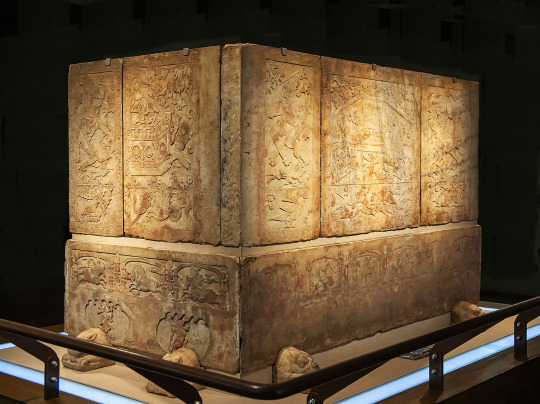

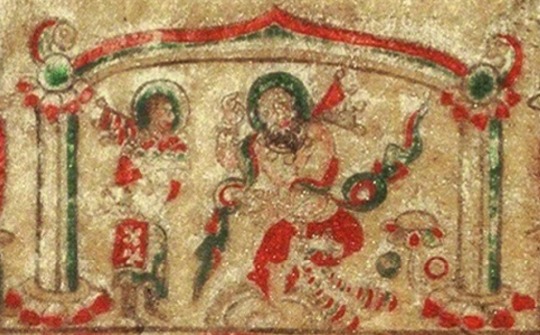

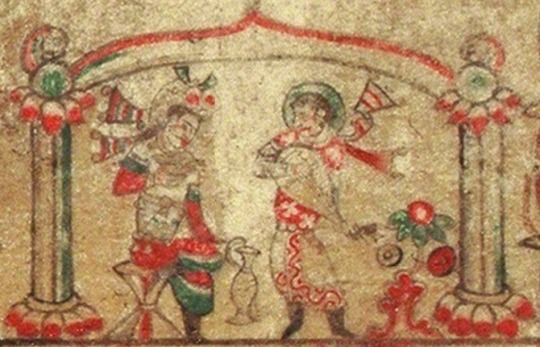




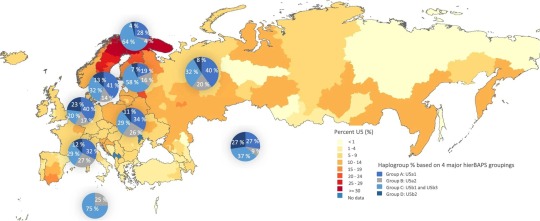
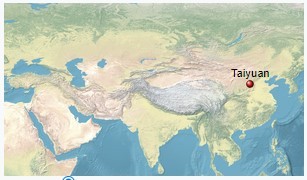
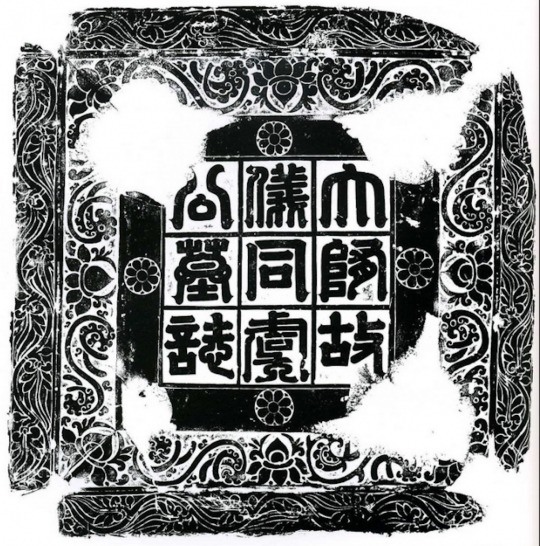
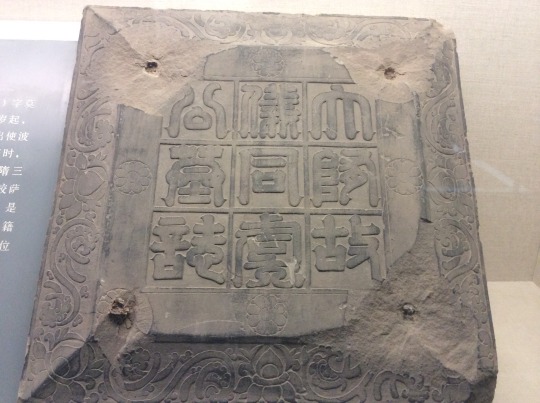

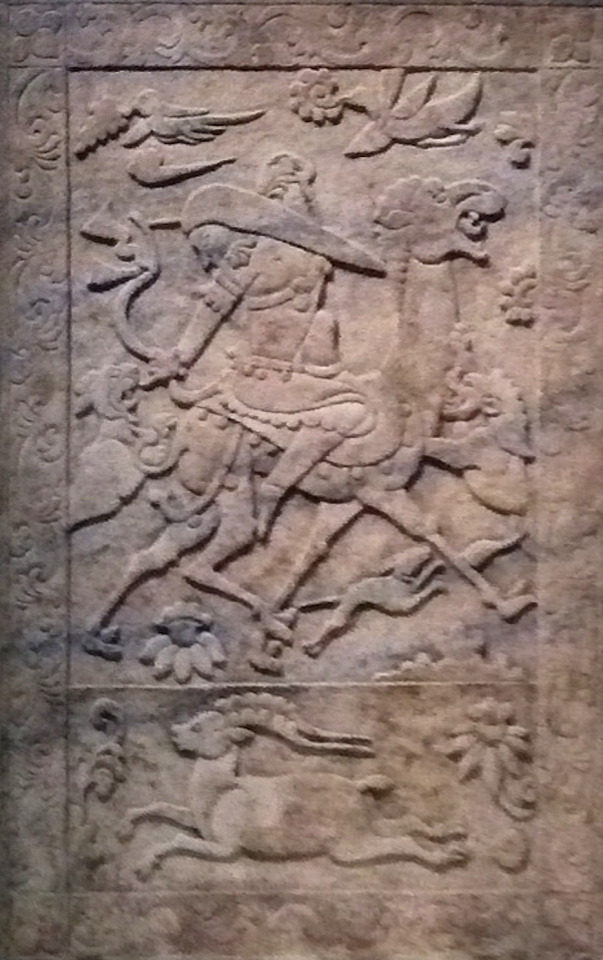
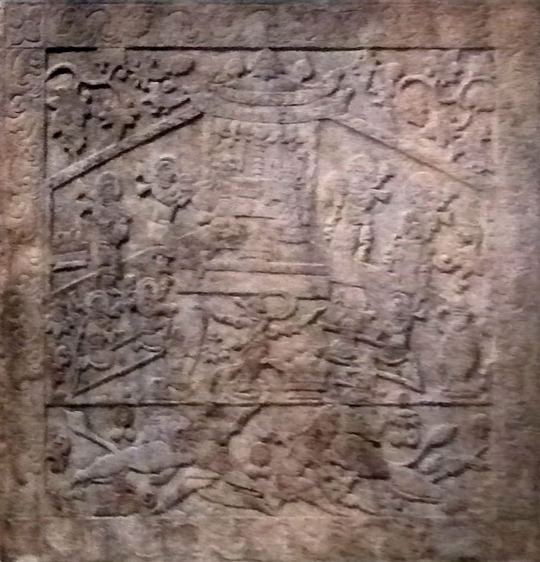
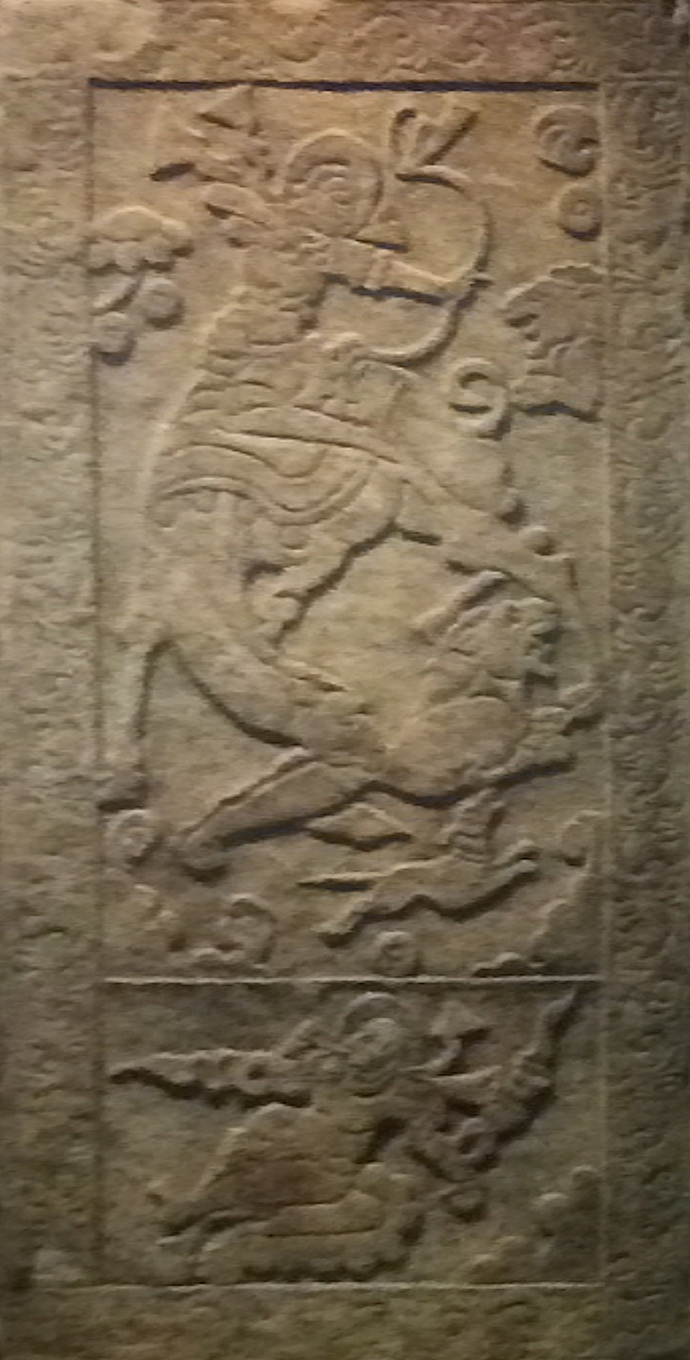
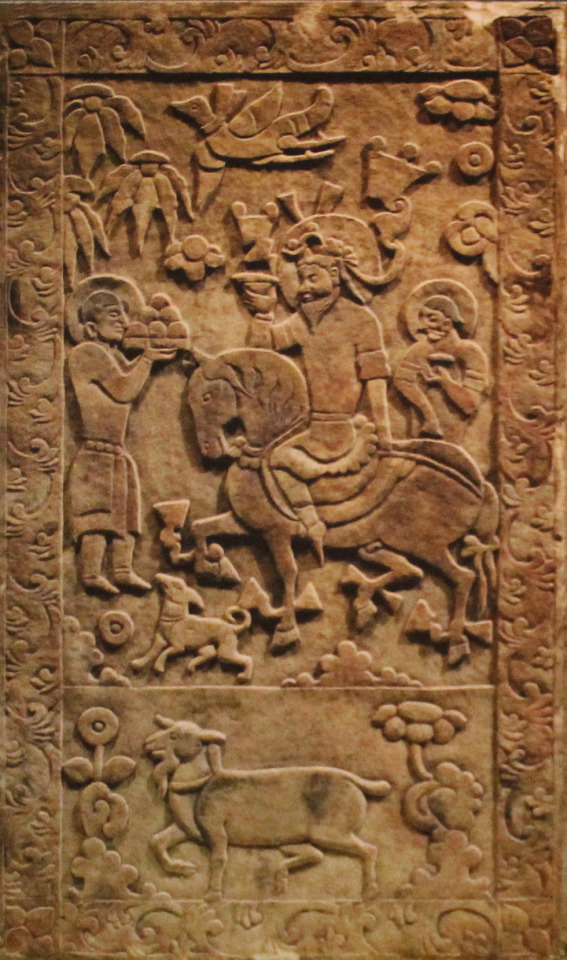
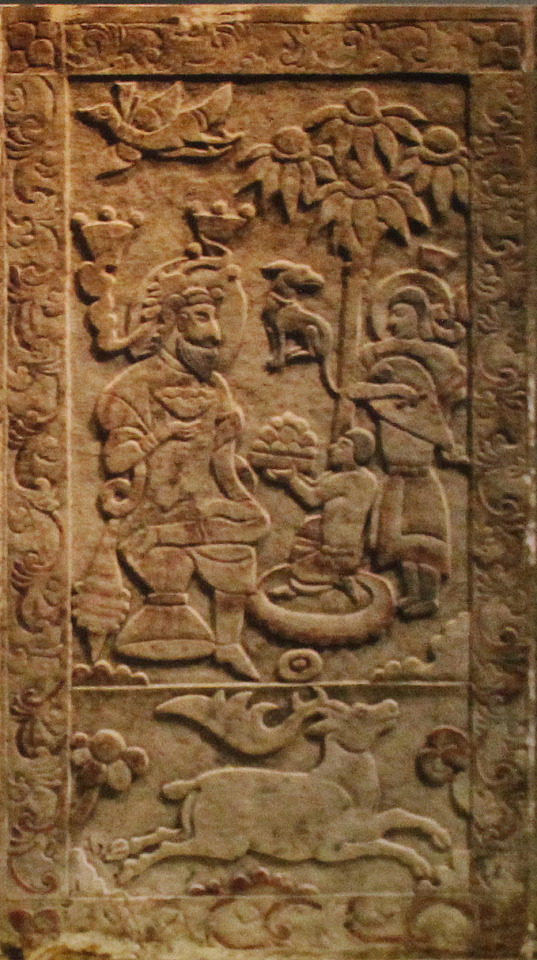
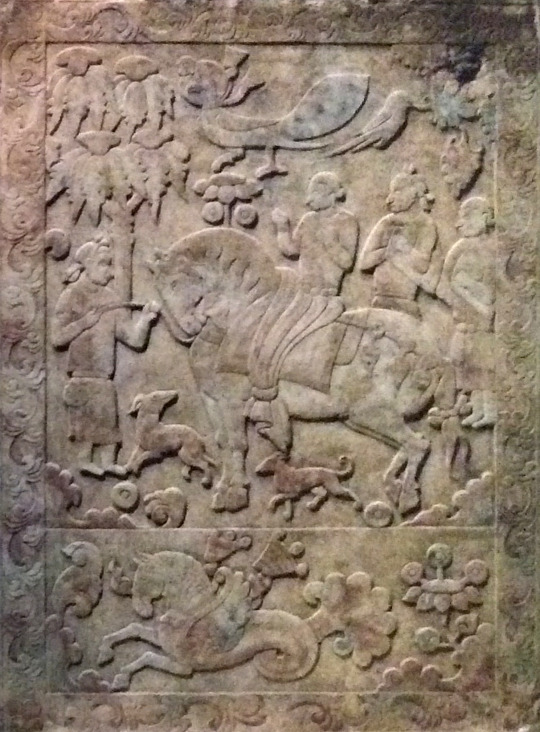
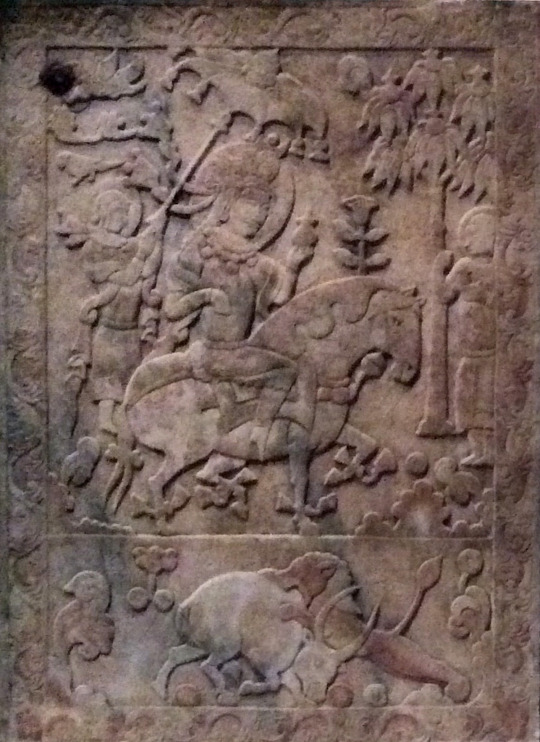
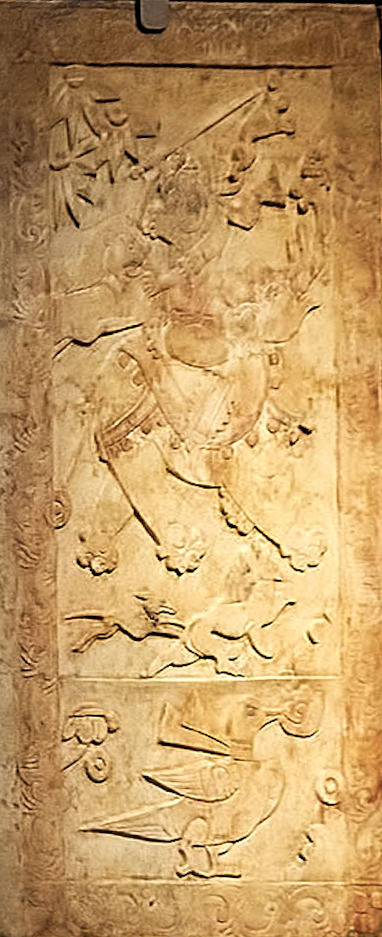
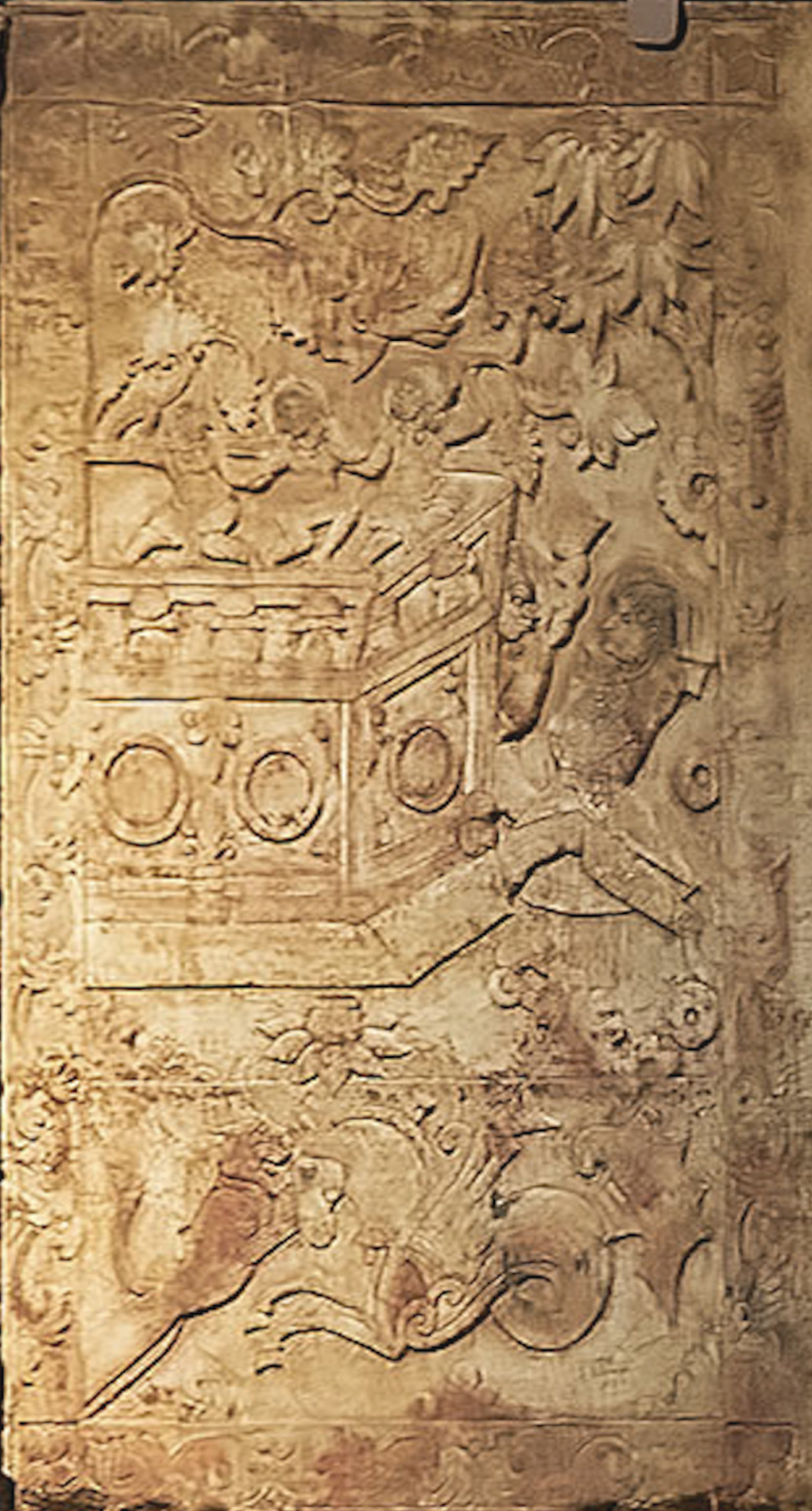

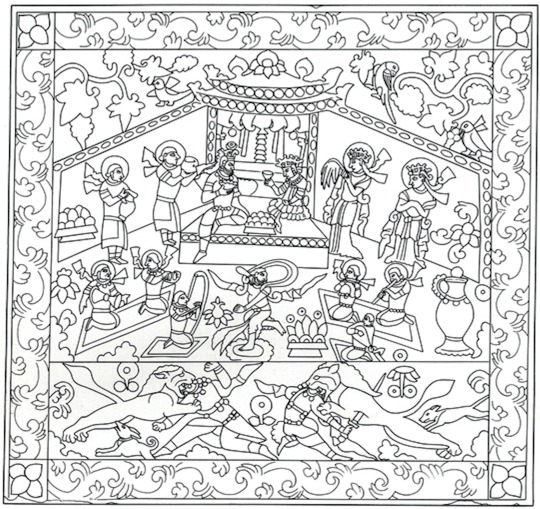
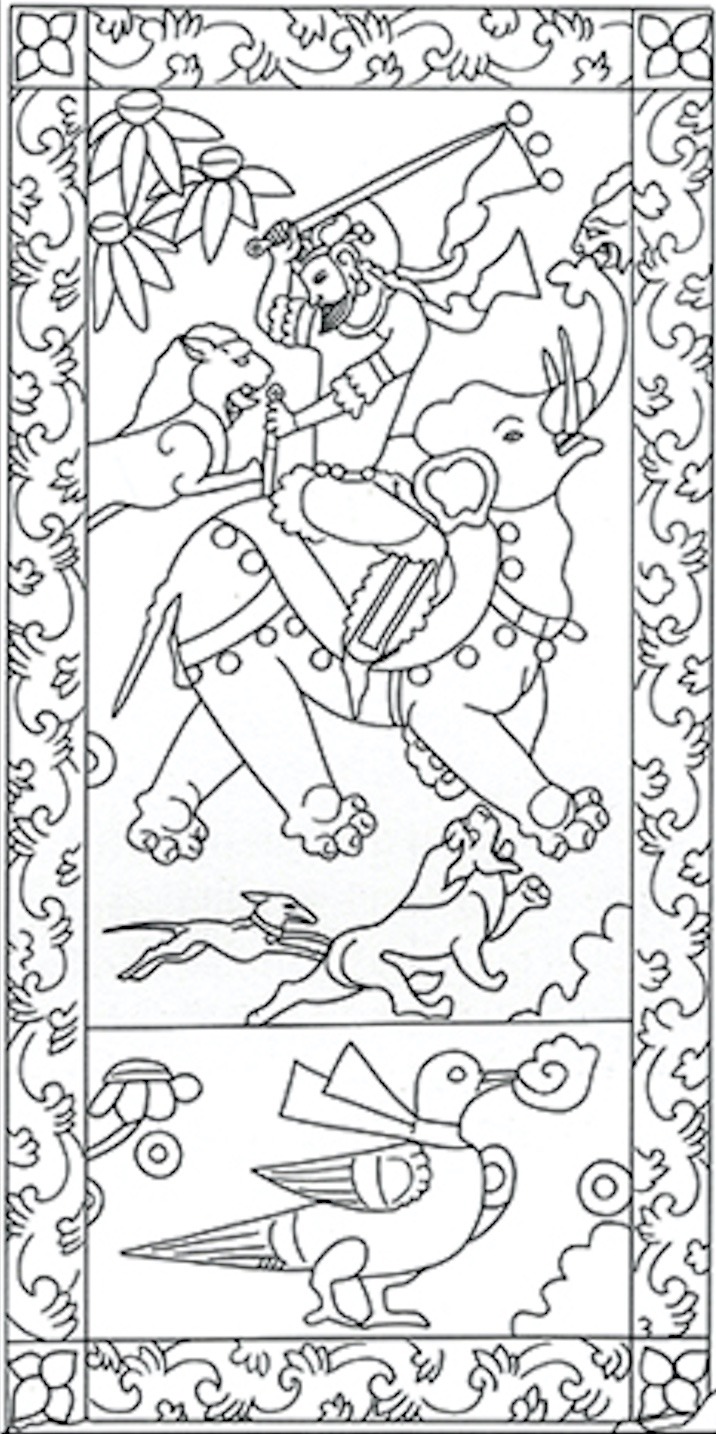
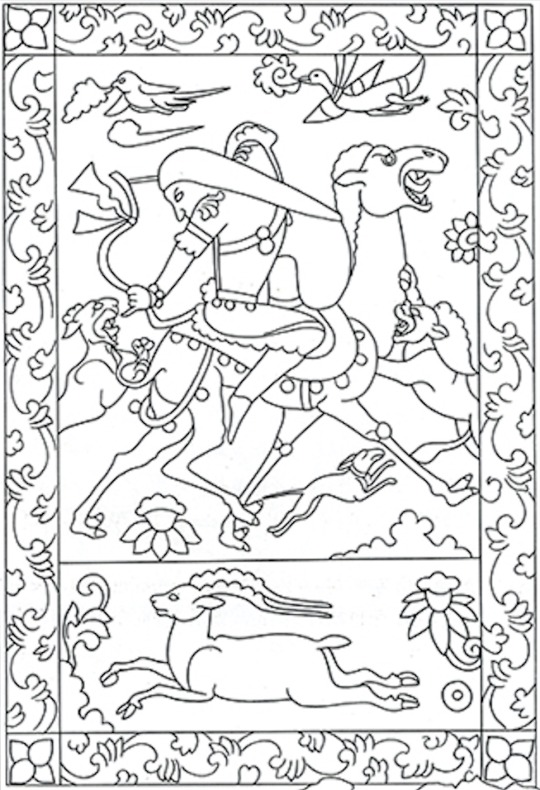



Tomb of Yu Hong 592-598 CE. Link to my blog at bottom with more sources and description of individual images.
This is probably a Sogdian tomb. Interestingly, the man has a haplogroup that was widespread amongst the blue-eyed Mesolithic/Neolithic Western Hunter Gatherers (WHG are probably where blue eyes originated from) and the haplogroup is found today most prominently in Sami, Finns, and Estonians. His wife has a haplogroup found prominently amongst East Asians. Based on her East Asian origins and the inclusion of some Turkic-looking people in the tomb's artwork I would assume she was probably a Turk, herself. The long-haired men without halos (e.g. panel 4) are probably Turks, that was a typical appearance for them during this time period. Men from other surrounding populations such as the Sogdians, Huns, Tocharians, etc. typically kept shorter hair that didn't go past their shoulders. More info:
"The man buried in the tomb went by Yu Hong (Chinese: 虞弘; pinyin: Yú Hóng; Wade–Giles: Yü Hung; 533–592 AD), with Mopan (莫潘) as his courtesy name, who was a Central Asian, probably of Persian or Sogdian origin, and practiced Zoroastrianism. He had settled in Early Middle Period China during the Northern Qi, Northern Zhou and Sui dynasties. This tomb is so far the only archaeological find in the Central Plains region that reflects Central Asian (Western Regions) culture. The epitaph found in the tomb records that he was a noble of the city of Yü-ho-lin / Yuhelin (尉紇驎) in the mysterious Yu country (魚國), assumably for which he is named, because the two characters 虞 and 魚 are homophones.
According to the epitaph, Yu Hong started his career in service of the nomadic tribe at the time, known as Ruru. At the age of 13, he was posted as an emissary to Persia by the Khagan of Ruru, as well as Parthia, Tuyuhun and Yuezhi. Later he went on a mission to the Northern Qi, Northern Zhou and Sui dynasties. He served as chien-chiao sa-pao fu / jianjiao sabao fu (檢校薩保府, lit. “acting director of the office of Zoroastrian affairs”, or “Sogdian affairs”) during the Northern Zhou period. The term sa-pao / sabao (薩保) comes from the Sogdian s′rtp′w, means a “caravan leader”.
He had later served as a provincial governor in the Sui dynasty government, a chieftain of the Central Asian people who had settled in China during that period. Yu Hong died at the age of 59 in 592 AD. His wife survived him by six years, and was buried in the same grave in 598 AD.
A study on ancient DNA reveals that Yu Hong belonged to the haplogroup U5, one of the oldest western Eurasian-specific haplogroups, while his wife can be classified as haplogroup G, the type prevalent in East Asia.
The age of U5 is estimated at between 25,000 and 35,000 years old, roughly corresponding to the Gravettian culture. Approximately 11% of Europeans (10% of European-Americans) have some variant of haplogroup U5.
U5 was the predominant mtDNA of mesolithic Western Hunter Gatherers (WHG) [this is where blue eyes probably originated from].
U5 has been found in human remains dating from the Mesolithic in England, Germany, Lithuania, Poland, Portugal, Russia, Sweden, France and Spain. Neolithic skeletons (~7,000 years old) that were excavated from the Avellaner cave in Catalonia, northeastern Spain included a specimen carrying haplogroup U5.
Haplogroup U5 and its subclades U5a and U5b today form the highest population concentrations in the far north, among Sami, Finns, and Estonians. However, it is spread widely at lower levels throughout Europe. This distribution, and the age of the haplogroup, indicate individuals belonging to this clade were part of the initial expansion tracking the retreat of ice sheets from Europe around 10,000 years ago.
U5 was the main haplogroup of mesolithic European hunter gatherers. U haplogroups were present at 83% in European hunter gatherers before influx of Middle Eastern farmer and steppe Indo-European ancestry decreased its frequency to less than 21%.
Today, haplogroup G is found at its highest frequency in indigenous populations of the lands surrounding the Sea of Okhotsk. It is an East Asian haplogroup. Haplogroup G is one of the most common mtDNA haplogroups among modern Ainu, Siberian, Mongol, Tibetan and Central and North Asian Turkic peoples people (as well as among people of the prehistoric Jōmon culture in Hokkaidō). It is also found at a lower frequency among many other populations of East Asia, Central Asia, Bangladesh, Sri Lanka, and Nepal. However, unlike other mitochondrial DNA haplogroups typical of populations of northeastern Asia, such as haplogroup A, haplogroup C, and haplogroup D, haplogroup G has not been found among indigenous peoples of the Americas."
-taken from Wikipedia
#sogdiana#indo european#ancient china#ancient history#antiquities#history#art#museums#sculpture#statue#ancient#turkic#eurasian#finnish#estonian#finno ugric#genetics
129 notes
·
View notes
Text
Today is May 31, remembrance day for victims of repressions and acarcılıq, the famines of 1920-1921 and 1931-1933. The former saw a million Qazaqs perish, and the latter between 1.3 to 1.5 million. By 1939, Qazaqs had lost more than a quarter of their population in a decade.

Moreover, Qazaqstan had lost most of its intelligentsia due to political repressions. A short list under the link.
• Äliyhan Bökeyhan (1866-1937) — leader of the Alac Party and editor of the Qazaq newspaper, which ran from 1913 until 1918. He stood for an independent and democratic Qazaq state. In 1917, he was elected president of the newly-formed Alac Autonomy, but the republic was crushed in 1920 by the Bolsheviks. In 1937 he was arrested and executed in Moscow.
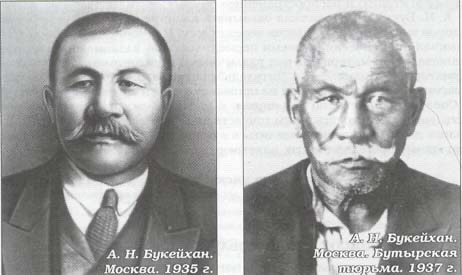
Bökeyhan in 1935 and 1937.
• Ahmet Baytursınulı (1872-1937) — linguist and author of the reformed Arabic alphabet called töte jazıw, which adapted the writing system to be more accessible and accounting for the Qazaq language's unique features. He is also responsible for coining new terms for Qazaq grammar and literature. In 1937 he was accused of being an "enemy of the people" and was shot by a firing squad.

A. Baytursınulı in 1913.
Mirjaqıp Dulatulı (1885-1935) — poet and writer, author of the poem Oyan, Qazaq! (Wake up, Qazaq!) and the first Qazaq novel Baqıtsız Jamal (Unhappy Jamal), which brings to light the sad fate of women in patriarchal Qazaq society. The lines of Oyan, Qazaq! go thus:
Open your eyes; wake up, Qazaq; raise your head,
Don't waste your years in the darkness.
When the land is lost, faith corrupted, and the situation's getting worse,
My dear, there's no time to rest.
Oyan, Qazaq! has become a slogan for a free Qazaqstan in modern times.

M. Dulatulı in 1916.
In 1928 he was accused of "Qazaq nationalism" and was arrested. He spent two years in Butyrka prison, then was transferred to Solovki prison camp. He died in Sosnovka in 1935.
Turar Rısqulov (1894-1938) — chairman of the Central Electoral Committee of the Turkestan ASSR, founder of the "Bukhara" society, and participant in the 1916 Central Asian revolt. He supported the agency of indigenous Turkic peoples, viewing revolution along national lines as a fight against colonial exploitation and settler violence. He was charged with Pan-Turkism and was executed in 1938.

Portrait of T. Rısqulov.
İliyas Jansügirov (1894-1938) — poet, writer, and translator. He's the author of the famous poem Qulager about the death of Aqın-Seri's beloved horse; he also translated countless works of Pushkin, Gorky, Mayakovsky, Hugo, Heine, and other foreign classics. He was executed without trial in 1938.
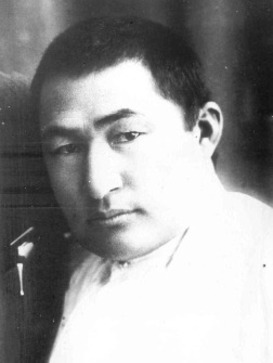
İ. Jansügirov, presumably in the 1920s.
There were many more bright people who were imprisoned and executed by the Soviet regime, such as writers Mağjan Jumabay, Säken Seyfullin, Beyimbet Maylin; doctor Sanjar Asfendiyarov, linguists Qudaybergen Jubanov, Teljan Conanov, Näzir Törequlov.
The forced settlement of nomads led to Qazaqs being ripped away from their traditional life and culture, the mass repressions of the intelligentsia silenced people's voices. This day is as important as ever in light of the situation in Qazaqstan, where the government still imprisons journalists and activists; where the 200+ people killed during Bloody January and their families still haven't seen justice; and where, in the world, Russia denies Qazaqstan's history and territorial integrity, and still dreams of rebuilding the Russian Empire.
126 notes
·
View notes
Text
My bone to pick with shitty hetalia "Siberia" OCs
Spoiler alert, they're all terrible!
Many people who make Siberia ocs often refer to Siberia as a nation. Siberia is not a nation, it is a large geographical area which is the home to many different ethnic groups.
This excuse is often made for singular "native American" ocs too; Using the excuse that because of the Russian conquest of Siberia which resulted in the massacre and displacement of the different peoples of Siberia, this is a justification to put all of these different groups into one, singular, Siberia OC, as apparently, there's no point in doing actual research into the different ethnic groups who are native to Siberia!
This I find to be blatantly disrespectful, conflating such diverse groups into one (often whitewashed as I'll get onto later) singular OC and flippantly saying "oh well a lot of them are dead now so..." is again, disrespectful and insensitive. A Tuvan is not an Evenk is not a Yakut is not a Buryat is not a Chukchi is not a Koryak.
That list I just gave you is just a small example of the sheer diversity of the ethnic groups who are native to Siberia.
It leaves a very bad taste in my mouth when people use the Russian conquest of Siberia - an already sensitive topic because of the displacements and killings of the native people of Siberia which in turn, resulted in an ethnic cleansing, as a vehicle to then create (as I said before, often whitewashed) OCs which dismiss the unique cultures and histories of these different groups. Do people...Not see the irony in this?
Honestly, just 5 minutes of research into the native groups of Siberia would show you that trying to conflate all of these different cultures into one just does not make sense regardless. Though these cultures share similarities because of course they are North East Asian - this is not a justification to waive off the diversity of these ethnic groups!
Let's take Buryats and Yakuts for example, two ethnic groups who live in Siberia and who are considered to be Siberians. Buryats are a Mongolic people, their culture is quite similar to that of Khalkha Mongols, the majority ethnic group in Mongolia. Yakuts on the other hand, are not a Mongolic group.
The Buryats live primarily in the Republic of Buryatia, located in southern Siberia, Russia, while the Yakuts, also known as the Sakha, inhabit the Sakha Republic (Yakutia) in the Russian Far East. Both groups have historically practised nomadic herding, but the Buryats traditionally focused on cattle herding and moved with their herds across the vast steppe, while the Yakuts were known for their reindeer herding and horse breeding in the Arctic and subarctic regions. The Buryats' culture has been heavily influenced by Tibetan Buddhism due to historical connections with Tibet, and shamanism also plays a significant role in their spiritual practices. The Yakuts' culture, in contrast, reflects influences from both Turkic and Siberian indigenous elements, with some Russian cultural assimilation over time.
Geographically speaking, they also differ. Buryatia is characterised by diverse landscapes, including mountains and lakes, while Yakutia is known for its extreme cold temperatures and vast tundra. Despite their differences, both groups have rich cultural heritages and face challenges in preserving their traditions and languages amidst Russian colonisation.
Just between Buryats and Yakuts, you can already see how they differ culturally and linguistically. Of course there will be some similarities as they are both Northern Asian cultures, but we don't give Spain and Portugal a singular personification because of similar characteristics/cultures now, do we?
Another issue I have with Siberia OCs is when, not only (by default) is a Siberia OC blatantly dismissive of the diversity of the ethnic groups who are native to Siberia, but when they make their already insensitive OC... White Russian, or half Russian? Do I even need to explain why this is offensive?
Yes, a majority of people who live in Siberia now are ethnic Russias. Do you ever... wonder why that is though?
What's worse is when people know, but then use the displacement of the people of Siberia as a justification to make their Siberia OC half Russian or white. This is blatant white washing, and though many groups are Russified, this does not mean that they've completely let go of their native culture and or are extinct, nor is it an excuse to ignore their native cultures to make an insensitive oc.
There is a difference in recognising that yes, some of these groups have gone through a process of Russification/have adopted many aspects Russian culture (to varying degrees depending on the group) , and straight up white washing their cultures by making a half white-Russian or a white Siberia OC - as if each of their unique identities do not deserve the agency to be represented by an equally unique and accurate personification.
Groups in Siberia never had strong relations with ethnic Russians until the Russian conquest of Siberia. It's okay to have an oc of a Siberian ethnic group which reflects the degree of Russification that that group underwent because (unfortunately) it's true for many of them - Kazakhstan for example is a central Asian country that underwent a process of Russification and it's accurate to reflect the degree to which Kazakhstan was Russified and how this affected him in his personification. Despite it being an unfortunate fact, you can't escape it, and I am not against reflecting this.
But it's a whole different ball game when you take already marginalised groups of people, squeeze their diverse cultures into a clusterfuck of an oc, which is already bad in and of itself… but then WHITEWASH THIS OC. EVEN WORSE WHEN THEIR CULTURES WERE ACTIVELY PERSECUTED BY THE RUSSIAN STATE, AND ARE STILL BEING PERSECUTED.
Further, the idea of making the Siberia OC "young" (even an oc of a singular Siberian ethnic group) as in, born during the Russian conquest era… and make Russia some sort of father to Siberia… This just absolutely reeks of paternalistic colonialist propaganda; the idea that these groups had no culture, no right to govern themselves or the idea that they didn't have the ability to govern themselves before the Russians came and subsequently "gave them culture" and "enlightened them" in their ways.
What other actual justification is there to do something like this? Seriously? When these cultures are actually quite old and predate the Russian conquest?
As a Filipino who has to deal with this sort of trash from Spaniards, it is not appreciated.
Further, if it wouldn't make sense to make a native American group OC half white because of white settlers in America, and if it wouldn't make sense to make the Philippines half Spanish because of our colonisation under the Spanish, why then is it ok to do it to the native people of Siberia?
This is the WORST part about Siberia ocs. But people who make their Siberia ocs the representation of 2p (or BOO! EVIL!) Russia.
This is so egregiously racist and I don't even know how people can headcanon this without even batting an eye.
First of all, making Siberia the "evil Asian" side of Russia… okay I've bloody banged on about this before but I really don't care at this point. This is stepping into peddling eugenicist racial science about Russian.
The rhetoric that Russians (but this also applies to other eastern Europeans, however I'm specifically talking about Russia here seeing as it's about Siberia ocs) are not "true Europeans" because of Asiatic influence, both from the past (Mongol invasions) and present (Russian Asians who are the result of the Russian conquest of Siberia and central Asia). And because of this, this means that Russians are also a load of evil, Eastern Hordes too because of their so called "Asiatic" heritage.
There's a saying in some Eastern European countries about Russians. It goes something along the lines of "Scratch a Russian, you'll find a Tatar." This is used in an offensive manner to basically call Russians subhuman or evil because of their so-called "tatar" (Asian) heritage.
Keeping this in mind… Making Siberia… the "evil Asian side" of Russia… yeah I'm not beating around the bush with this one. You're a filthy racist if you do this.
It's even more egregious when you're using Siberians as a justification to make your cheap 2p Russia OC evil, as if SIBERIANS are the aggressors towards Russians. WHEN THEY WERE THE ONES WHO ARE COLONISED BY RUSSIA AND TO THIS DAY FACE MARGINALISATION UNDER THE RUSSIAN STATE. BUT NO. THEY'RE THE BIG EVIL AGGRESSORS TOWARDS YOUR INNOCENT WHITE BLORBO, RIGHT?
tl;dr If you have a singular "Siberia" oc it's trash no matter what, hope this helps 👍
#hetalia#hetalia world stars#hetalia world series#hetalia world twinkle#hetalia discourse#Hetalia racism#Hetalia Russia#Aph Russia#Hws Russia#ivan braginsky#Aph Siberia#Hws Siberia#Hetalia Siberia#Siberia oc#2p Russia#2p!Russia#2p hetalia#2p!hetalia#Not aimed at any of my followers btw ik there are some people who used to have Siberia ocs but realised it was offensive#Dw it's aimed at people who continue to do this despite knowing otherwise
73 notes
·
View notes
Text
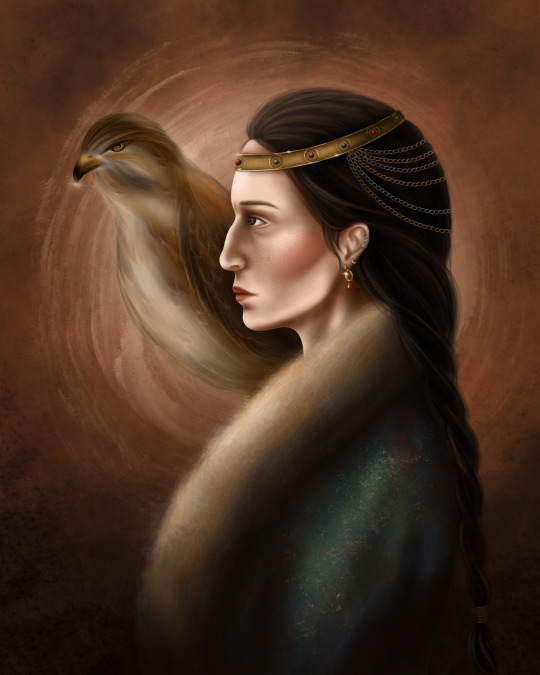
~Woman Leader~
My original character inspired by old Turkic nomadic culture. 🌞
#digital art#digital portrait#original character#original art#oc artwork#oc#oc artist#oc art#art#artwork#fantasy art#fantasy#fantasy character#the silmarillion#silmarillion#silm art#the silm fandom#house of finwe#house of feanor#house of fingolfin#house of finarfin#sons of feanor#haleth#caranthir#feanor#fingolfin#maedhros#maglor#maitimo#character design
24 notes
·
View notes
Text
Dracula Dictionary, May 8th
diffuse: lacking clarity or conciseness
prosaic: everyday, ordinary; characteristic of prose as distinguished from poetry, factual
bear up: remain cheerful in the face of adversity
precipice: a very steep or overhanging place / a hazardous situation
conviction: a firmly held belief or opinion
menial offices: work that is considered to be boring or degrading
mountain ash: a tree, also called rowan, believed to protect against evil beings and to keep travellers from getting lost
Szekelys: a Hungarian subgroup living mostly in the Székely Land in Romania
Ugric: the ancestors of the Hungarians of Central Europe
Huns: a nomadic people who lived in Central Asia, the Caucasus, and Eastern Europe between the 4th and 6th century AD
Scythia: an area in modern day Iran and other areas of eastern Europe
Attila: ruler of the Huns until 453
Magyar: Hungarians
Lombard: also called Langobards, a Germanic people who conquered most of the Italian Peninsula from 568 to 774
Avar: likely refering to Pannonian Avars, an alliance of several groups of Eurasian nomads of various origins
Bulgars: Turkic semi-nomadic warrior tribes
Turk: a native or inhabitant of Turkey, or a person of Turkish descent
Arpad: head of the confederation of the Magyar tribes at the turn of the 9th and 10th centuries
Honfoglalás: the Hungarian conquest of the Carpathian Basin
standard of the King: the king's flag, especially when flown in battle
Cassova: misspelling of Kosovo, a state in Southeast Europe
Wallach: people from Wallachia, the area just south of Transylvania
the Crescent: the Ottoman Empire
Voivode: a local governor or ruler in central or eastern Europe, in particular a semi-independent ruler of Transylvania
Mohács: a town in Hungary
Hapsburgs: an influential royal family in Europe from the 15th to the 20th century
Romanoffs: the reigning imperial house of Russia from 1613 to 1917
84 notes
·
View notes